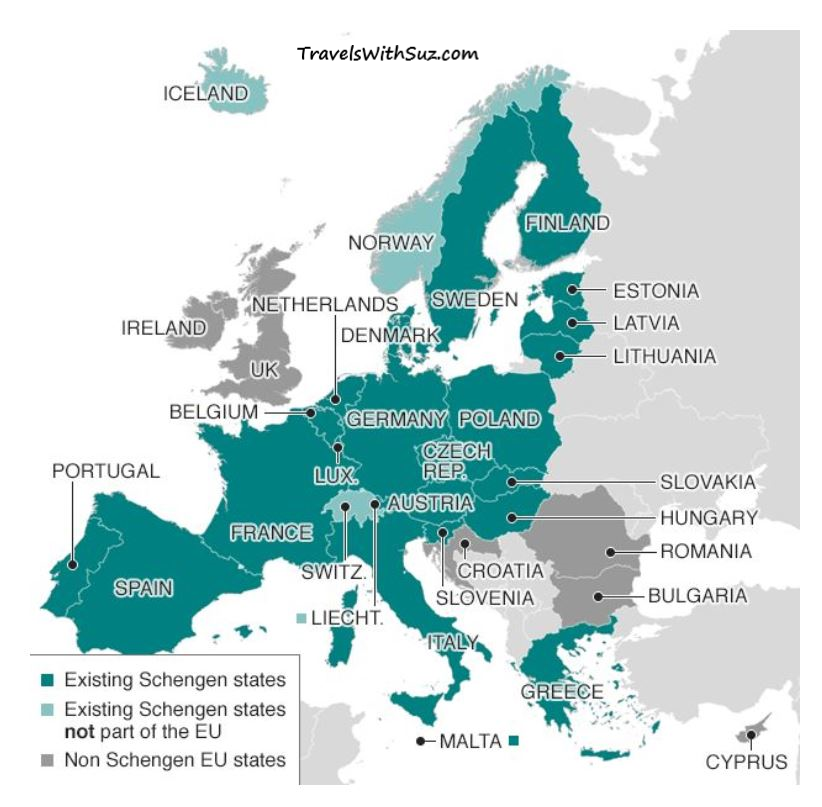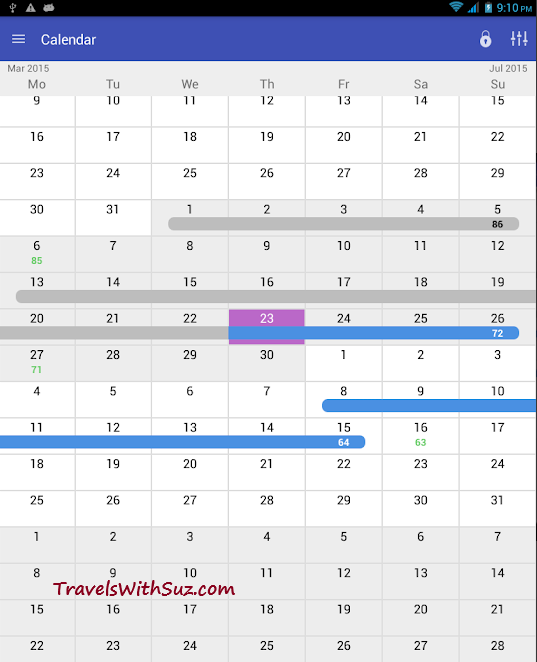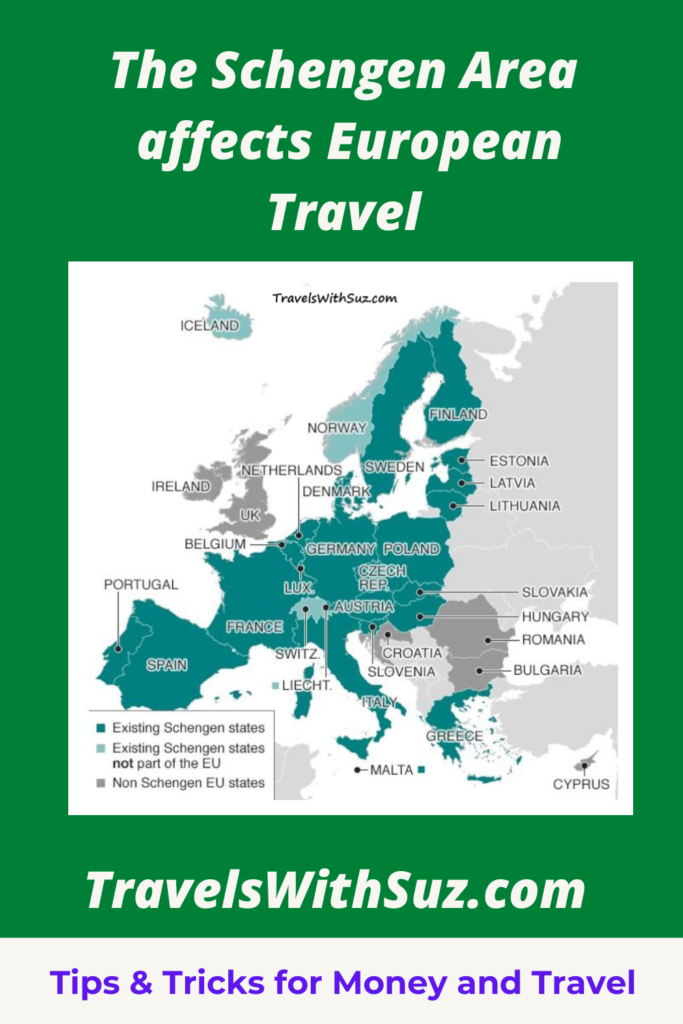The important and basic thing to know about the Schengen Area is that if you are not a citizen of a Schengen country, you are limited to spending a rolling 90 out of any 180 days in the Area.

I spent 7 months of 2019 overseas, mostly in Europe, and as a US citizen (i.e., not a Schengen citizen) I had to pay attention to where I was, and how long I’d be in the Area. I hadn’t heard of the Schengen Agreement before I started my travels, and I certainly didn’t understand it!
Here’s an overview from my experience; hope it helps you plan.

The Schengen Area is a group of mostly European countries which abolished their internal borders for the free and unrestricted movement of member citizens. It was formed in 1985, and is still growing.
The Schengen Area currently consists of 26 countries: Austria, Belgium, Czech Republic, Denmark, Estonia, Finland, France, Germany, Greece, Hungary, Iceland, Italy, Latvia, Liechtenstein, Lithuania, Luxembourg, Malta, Netherlands, Norway, Poland, Portugal, Slovakia, Slovenia, Spain, Sweden, and Switzerland.
It includes many of the European Union countries, but not Ireland, Romania, Bulgaria, Croatia and Cyprus.
And, although NOT members of the European Union, countries like Norway, Iceland, Switzerland and Lichtenstein are part of the Schengen Area.
One of my first stops was to visit my daughter and her family in Germany. She’s the one who alerted me to the Agreement. My plan was to be based in Germany from November 2018 through at least April of 2019…so the problem was real.

Sooooo…enough background; how do you deal with it?
(This is Suz with a friendly bartender in a jenever bar in Amsterdam)
The problem with figuring out how I could travel in and out of the Schengen Area for 6 months was the “rolling” part. It’s even difficult to explain!
For instance, if you’re in the area for 1 week, then leave for 1 week, does your 90-day Schengen “clock” reset back to 90 days? Nope. Say you’re “in” for 26 days (you now have 64 days left), then you leave the Area for 16 days and return. You might think you now have 80 days to be in the Area? [90-26+16=80]. Nope. You only have 64 days left until 180 days from your entry date. (That’s the ‘rolling’ part.) So, you do need to plan carefully if you want to be there long term. Confusing, right?

All right! We began with a paper calendar. It was ridiculous. We struggled. Try it! (nah…don’t bother! I have the solution for you…)
I finally said, “There’s got to be an app for this!”…and, of course, there is:
With the Schengen Calculator App, you mark the days you are in the Schengen Area, and it automatically shows you how many days are left. It was an absolute lifesaver! I arrived in Germany in November, I needed to be there in January for the birth of my granddaughter, and I already had plans to travel in northern Europe for the month of April before returning to the US for a family wedding.
I left the Area 3 times, all three times to Africa (because it was winter, and I wanted to be warm!); thank goodness I had the Schengen app…When I left the Schengen Area to return to the US in May, I was down to Day Zero!!
(The app link and screenshots above are for Android devices; there are several Schengen calculators for iPhones and Macs in the Apple Store, but they have mixed reviews. Though I haven’t tried them, this one looks like the most reliable one, from the reviews.)

Here are my cute grandbabies!
(Why did I give up my iPhone for an Android?…Where did I go to get out of the Schengen Area during those 7 months? Well, those are stories for other articles – follow along to keep watching! Here’s one destination that I especially loved…)
Did you sign up for my newsletter yet?
I hope this helps if you plan to be “over there” for extended periods! Let me know what you think in the comments.





Suz here: update to the article…since this article was written, Croatia has been added to the Schengen Area and adopted the euro.
Bulgaria and Romania are joining the Schengen Area at the end of March, 2024.
Hey, Suz here – I need to update this article…there have been a few changes; for instance, Croatia is now a Schengen country.
I did not know about this! I’ve visited Italy but was only there two weeks. My other travels have been in the UK which doesn’t seem to apply. Good to know there is an app to help sort it out.
This is news to me. I have no plans to go to Europe for several years yet.
I’d never heard of this agreement before!
That app sounds like a lifesaver! I haven’t been to Europe for more than 2 months at a time. My goal is to spend a longer time in the future… so this article was useful! I had heard of the Schengen agreement… but wasn’t really sure about the details. Thank you!
This is very interesting! I was not aware of this formality to travel in Europe…really good/important to know about!
I have not had to deal with an extended stay in a Schengen country, but it’s good to know. Of course there’s a Schengen app — who knew?
Wow, thanks for the info. I hadn’t heard of the Schengen Area or Agreement, so this is helpful!
I had no idea this was a thing.
I’ve never heard of the Schengen Area, but it sounds like something I’d like to take advantage of. Good thing there’s an app though, because my goldfish brain would get confused!
Woah, I have never heard of this and it is so good to know. Thank you for sharing.
I had no idea about this agreement! How useful it is to have an app for it though!
Wow I hadn’t heard of the Schengen Agreement before! That is crazy! Thank you for the explanation!
Wow, Suz, you are always so informative, and know so much about traveling. This is something I’ve never heard of – thanks!
Oooohhh, I definitely would need the handy calculator! I had never heard of this before & will definitely keep in mind for when travel opens back up!
This was informative and will be helpful for many. Thanks!
Had no idea about the Schengen Area either. Thanks for the info.
There is so much to learn about foreign travel policies not just for residents but visitors need to be aware of new laws that are being enforced since the pandemic! Great information!
I love that there is an app for this! Too important to make a mistake!!!
I have not heard of this before. I want to spend all summer in Europe in a few years.
Very useful info. I had no idea about any of this. I went to Europe last year for the first time for 3 weeks and loved it. Will definitely remember this for next time/longer travels.
Wo I never heard of this. Really great info thanks!
Interesting! I would love to have that problem as I haven’t been able to travel nearly as much as I’d like to these days. Hopefully I will need this app in the future. 🙂
Ok now I understand! I really had no idea this was a thing! Thanks to you I am prepared!